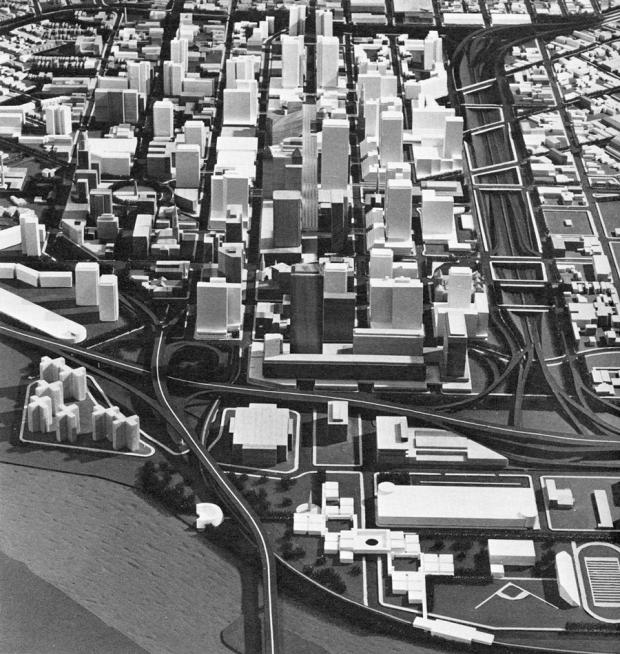Looking Backward: Downtown Plan, 1971
In 1971, Mayor Frank A. Sedita unveiled a downtown plan whose impact, for better or worse, is felt to this day. The Regional Center: A Comprehensive Plan for Downtown Buffalo, New York aimed to produce a “major change in the downtown area over the next twenty years.” And indeed it did. Here, a photograph of an architectural model shows the proposed downtown Buffalo of 1990. New office buildings and hotels populate the skyline. An inner loop of expressways, enclosing downtown like an alligator-infested moat, feeds directly into peripheral parking structures. A regional rapid transit system links downtown with Amherst, Cheektowaga, and the Southtowns. A Main Street pedestrian mall—roofed over with a giant glass enclosure—forms the “key organizational feature of the downtown movement system.”
If the plan appears implausible, consider that Dallas or Atlanta look much like this today. Buffalo nearly got what it planned for; in fact, many of the basic concepts of The Regional Center plan were implemented. Buffalo did get a pedestrian mall, sans the glass roof and climate-controlled environment. Key ideas included a Convention Center, Metropolitan Transportation Center, and downtown campus for Erie Community College—all implemented. Though the sunken expressway was not built, the buildings along Elm and Oak streets were demolished anyway, and the streets became one-way, high-speed expressway feeders. The Metro Rail likely represents the plan’s largest impact. With about 22,000 people using it per day, Metro Rail has been a success as a transit link, and is now delivering on its original development promise. As the plan stated astutely, “one of the major purposes, if not the major purpose, of rapid transit is to preserve downtown.”

